#lughnasadh
Text

LUGHNASADH SWEET CORNBREAD
Unlike regular cornbread, this is a more southern-style cornbread that's a lot sweeter than cornbread. But really good!
Ingredients:
1 cup flour
1 cup cornmeal
1/4 cup honey
1/2 cup granulated sugar
1/2 cup butter
1/2 teaspoon baking soda
2 teaspoons baking powder
2 large eggs
A splash of cream
1 1/4 cups buttermilk
Pinch of sea salt
For The Honey Butter:
1/4 cup honey
1/4 cup butter
Preheat oven to 350 F. Combine flour, cornmeal, baking soda, baking powder, and salt together. In a separate bowl mix butter, sugar, and honey together. Then, whisk in your eggs, cream, and buttermilk.
Pour dry ingredients in increments to wet ingredients until just combined making sure not to overmix. Pour into a buttered and floured baking dish.
Bake for about 40-50 minutes or until a toothpick/knife comes out clean when stuck in the middle. This was just will my oven so cook times could be different when it comes to you. Make sure after 30 minutes, you check every 10 minutes.
To make your honey butter just combine your melted butter with honey and mix.
Serve in squares and top with honey butter and a tab of salted butter on top.
Enjoy! Have a blessed Lughnasadh!
#witches#witchy#kitchen witch#witch#magick#witches of tumblr#witchcraft#kitchen witch recipes#modern witchcraft#modern witch#lughnasadh recipes#lughnasadh#witchblr#lammas#wicca#kitchenwitchtingss#kitchen#bread
435 notes
·
View notes
Text

Lughnasadh (sometimes written Lughnasa or Lúnasa) is a festival originating from Ireland that celebrates the start of the harvest season.
It is traditionally celebrated on August 1st (in the northern hemisphere) or halfway between the summer solstice and the fall equinox.
The festival is named for the Irish God Lugh and it is said that the festival started as a funeral feast and athletic competition to honor his mother or foster-mother Tailtiu who had died of exhaustion after clearing the plains of Ireland for agriculture.
#lughnasadh#lughnasa#lunasa#tarot#tarot spread#wheel of the year#divination#divination community#divination tools#tarot cards#divination witch#witchcraft#pagan#tarotblr#witchblr
406 notes
·
View notes
Text
August 2023 witch guide
August 2023 witch guide
Full moon: August 1st in Aquarius
New Moon: August 16th
Blue moon: August 30th Aquarius into Pisces
Sabbats: Lughnasadh August 1st
August Sturgeon Moon
Also known as: Corn moon, harvest moon, ricing moon, barley moon, dog moon, fruit moon, grain moon, herb moon, red moon & wyrt moon
Element: Fire
Zodiac: Leo & Virgo
Animal spirts: Dryads
Deities: Diana, Ganesha, Hathor, Hecate, Mars, Nemesis, Thot & Vulcan
Animals: Dragon, lion, phoenix & sphinx
Birds: Crane, eagle & falcon
Trees: Alder cedar & hazel
Herbs/plants: Basil, bay, chamomile, fennel, orange, rosemary, rue & St. John's wort,
Flowers: Angelica, marigold, sunflower
Scents: Frankincense & heliotrope
Stones: Carnelian, cats/tiger's eye, fire agate, garnet, red jasper & red agate
Colors: Gold, orange, red & yellow
Energy: Authority, appreciation, courage, entertainment, finding your voice, friendship, gathering, harvesting energy, health, love, pleasures, power &vitality
Sturgeon moon gets it's name from the high numbers that are caught at the Great Lakes & Lake Champlain in North America during this time of year. The names come from a number of places including Native Americans, Colonial Americans & European sources.
Lughnasadh
Also known as: Lammas, August eve & Feast of bread
Season: Summer
Symbols: Scythes, corn, grain dollies & shafts of grain
Colors: Gold, green, yellow, red, orange, light brown & purple
Oils/incense: Aloe, apple, corn, eucalyptus, safflower, rose & sandalwood
Animals: Cattle & chickens
Stones: Aventurine, carnelian, citrine, peridot, sardonyx & yellow diamond
Foods: Apples, grains, barley cakes, wild berries, cider, honey, potatoes, rice, sun shaped cookies, blackberry, corn, nuts, breads, blueberry. berry pies & grapes
Herbs/Plants: Alfalfa, aloe, all grains, blackberry, corn, corn stalk, crab apple, fenugreek, frankincense, ginseng, goldenseal, grapes, myrtle, oak leaves, pear, rye, blackthorn &wheat
Flowers: Sunflower, cyclamen, heather, hollyhock & medowsweet
Goddesses: Aine, Alphito, Bracacia, Carmen, Ceres, Damina, Demeter, Freya, Grain goddesses, Ishtar, Kait, Kore, Mother Goddess, Sul, Sun Goddesses, Taillte, Zaramama, Ereshkigal & Ianna
Gods: Athar, Bes, Bran, Dagon, Ebisu, Dumuzi, Ghanan, Grain Gods, Howtu, Liber, Lono, Lugh, Neper, Odin, Sun Gods & Xochipilli
Issues, Intentions & Power: Agriculture, changes, divination, endings, fertility, life, light, manifestation, power, purpose, strength, success & unity
Spellwork: Sun magick, rituals of thanks/offerings, bounty, abundance & fire magick
Activities:
Bake fresh bread
Weave wheat
Take walks along bodies of water
Craft a corn doll
Watch the sunrise
Eat outside with family/friends/coven members
Donate to your local foodbank
Prepare a feast with your garden harvest
Give thanks to the Earth
Decorate your altar with symbols of the season
Clean up a space in nature
Plant saved seeds
This cross-quarter fire festival is celebrated on August 1st or the first full moon of Leo & the seventh sabbat of the year. It represents the first harvest when the Earth's bounty is given for the abundance received.
Some believe this is the time where the God has weakened & is losing his strength as seen in the waning of the day's light. The Goddess is pregnant with the young God who will be born on Yule.
In some traditions, this day honors the Celt god Lugh, the god of craftsmanship; He is skilled in many things including wheel making, blacksmithing & fighting. Though there is some discrepancy as to why Lugh is honored on this day. Some tales say it's because he held a harvest faire in honor of his adoptive mother, Tailtiu.
Sources;
Farmersalmanac .com
Boston Public Library- The Origins & Practices of Lammas/Lughnasadh by Dhruti Bhagat
Llewellyn's Complete Book of Correspondences by Sandra Kines
A Witch's Book of Correspondences by Viktorija Briggs
#witchcraft#wheel of the year#sabbat#lughnasadh#lammas#sturgeon moon#witchblr#wiccablr#paganblr#pagan#wicca#grimoire#book of shadows#witches of tumblr#tumblr witch#moon magic#witch tips#Witch guide#witchy things#traditional witchcraft#witch community#witch society#greenwitchcrafts#spellwork#witches#witch friends#all witches#correspondence
469 notes
·
View notes
Text
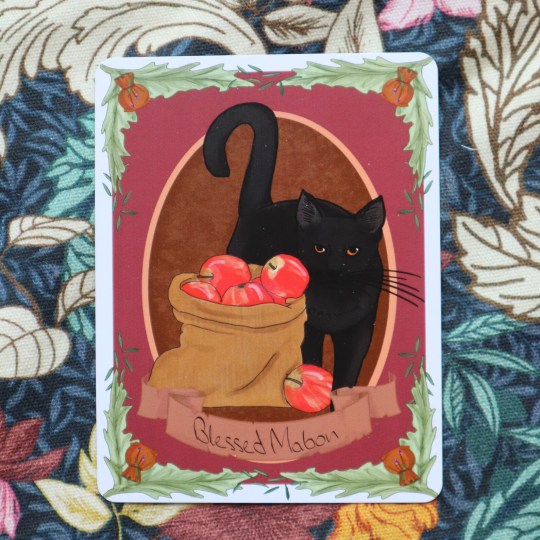


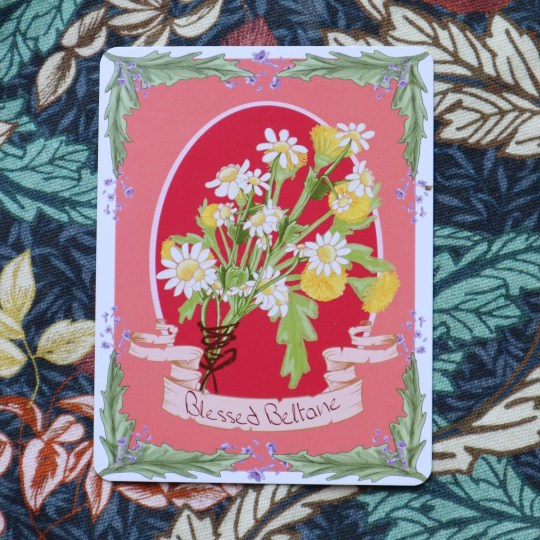


Wheel of the Year Art Prints by ofcraftsandcurios
Mabon // Lughnasadh // Litha // Beltane // Ostara // Imbolc
#art#art print#wheel of the year#pagan#pagan holidays#mabon#lughnasadh#litha#beltane#ostara#imbolc#samhain#yule#witchy#witchcraft#witchy art#drawing#illustration
166 notes
·
View notes
Text
Sabbats Masterpost
The History of Samhain
Samhain Facts
Samhain Correspondences
Samhain Crystals
Samhain Colors
Samhain Plants
Samhain Incense & Oils
Samhain Animals
Samhain Foods
Samhain Ritual & Magick
Samhain Deities
Samhain Altar Ideas
Samhain Activities
Last Minute Samhain Ideas
----------------------------------------
The History of Mabon
Mabon Facts
Mabon Correspondences
Mabon Crystals
Mabon Colors
Mabon Plants
Mabon Oils & Incense
Mabon Animals
Mabon Foods
Mabon Ritual & Magick
Mabon Deities
Mabon Altar
Mabon Activities
Last Minute Mabon Ideas
-----------------------------------
Lughnasadh/Lammas History
Lughnasadh/Lammas Facts
Lughnasadh/Lammas Correspondences
Lughnasadh/Lammas Crystals
Lughnasadh/Lammas Colors
Lughnasadh/Lammas Plants
Lughnasadh/Lammas Incense & Oils
Lughnasadh/Lammas Animals
Lughnasadh/Lammas Food
Lughnasadh/Lammas Ritual & Magick
Lughnasadh & Lammas Deities
Lughnasadh & Lammas Altar Ideas
Lughnasadh & Lammas Activities
Last minute Lammas Ideas
----------------------------------------
Litha History
Litha Facts
Litha Correspondences
Litha Crystals
Litha Incense & Oils
Litha Colors
Litha Plants
Litha Animals
Litha Foods
Litha Deities
Litha Altar Ideas
Litha Ritual & Magick
Litha Activities
Last Minute Litha Ideas
-----------------------------------------
The History of Beltane
Beltane Facts
Beltane Correspondences
Beltane Incense & Oils
Beltane Colors
Beltane Crystals
Beltane Plants
Beltane Animals
Beltane Altar
Beltane Food
Beltane Deities
Beltane Ritual & Magick
Beltane Activities
Last Minute Beltane Ideas
----------------------------------
Ostara History
Ostara Facts
Ostara Correspondences
Ostara Colors
Ostara Crystals
Ostara Incense & Oils
Ostara Plants
Ostara Animals
Ostara Food
Ostara Altar Ideas
Ostara Ritual & Magick
Ostara Deities
Ostara Activities
Last Minute Ostara Ideas
-----------------------------
The History of Imbolc
Imbolc Facts
Imbolc Correspondenses
Imbolc Colors
Imbolc Crystals
Imbolc Incense & Oils
Imbolc Plants
Imbolc Animals
Imbolc Food
Imbolc Altar
Imbolc Ritual & Magick
Imbolc Deities
Imbolc Activities
Last Minute Imbolc Ideas
--------------------------------------
The History of Yule
Yule Facts
Yule Correspondences
Yule Crystals
Yule Colors
Yule Plants
Yule Incense & Oils
Yule Animals
Yule Foods
Yule Ritual & Magick
Yule Deities
Yule Altar
Yule Activities
Last Minute Yule Ideas
#sabbat#esbat#samhain#mabon#lammas#lughnasadh#wicca#witch#pagan#heathen#shaman#beginner witch#litha#beltane#yuichiro matsumoto#ostara#imbolc
3K notes
·
View notes
Text
Blackcrowing's Irish Pagan Festivals Master Post
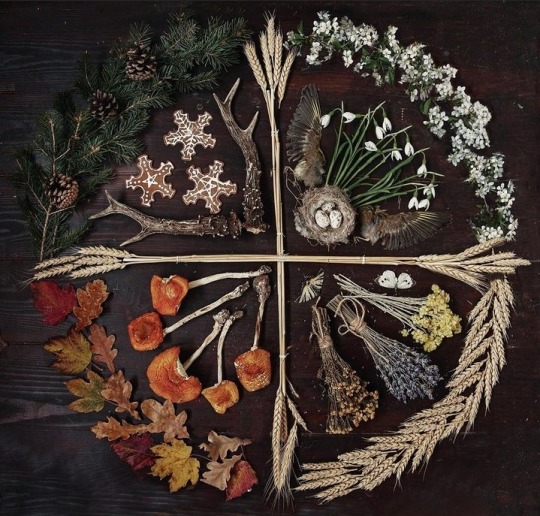
Samhain Festival
Samhain Authentic Foods
Imbolg Festival
Imbolg Authentic Foods
Bealtine Festival
Bealtine Authentic Foods
Lughnasadh Festival
Lughnasadh Authentic Foods
Art Credit - Familiar_flower
#lughnasa#lúnasa#lughnasadh#bealtaine#Baltaine#Beltane#imbolg#imbolc#fire festivals#fire festival#irish#irish mythology#irish polytheist#irish polytheism#irish pagan#irish paganism#irish reconstructionism#irish reconstructionist#celtic#celtic mythology#celtic pagan#celtic paganism#celtic polytheist#celtic polytheism#celtic reconstructionist#celtic reconstructionism#blackcrowing#samhain#pagan#paganism
153 notes
·
View notes
Text

Peaflowertea
#wheel of the year#sabbatic witchcraft#sabbats#sabbat celebration#wiccan sabbat#witches sabbat#mabon#Samhain#Yule#Lammas#lughnasadh#beltane#Ostara#imbolc#litha#witchblr#witches of tumblr#witchcraft#wicca#green witch#baby witch#witch community#green witchcraft#wiccan
826 notes
·
View notes
Text

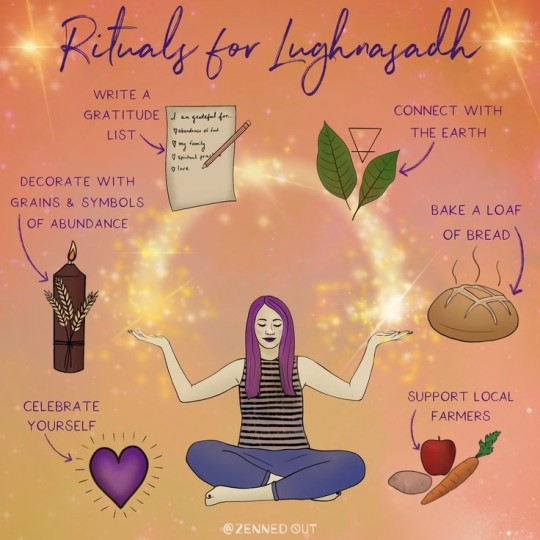


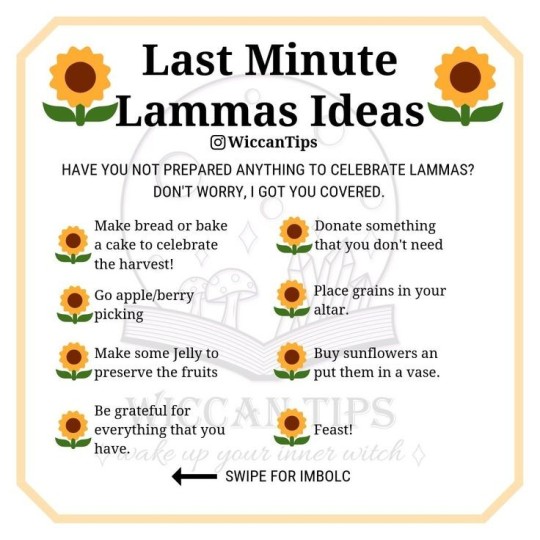


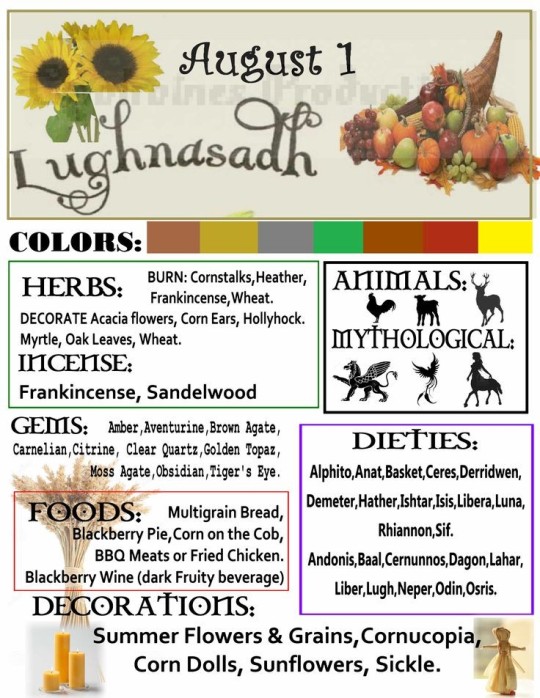

#aesthetic#witchblr#green witch#pagan witch#witch community#witchcore#sea witch#chaos witch#fae witch#dark witch#lammas#lughnasadh
247 notes
·
View notes
Text
Lughnasadh

#lammas#lughnasadh#wicca#witchblr#warlocket speaks#paganblr#anthropology#witchcraft 101#wicca for beginners#witchcraft#baby witch#beginner witch#witchcraft tips
390 notes
·
View notes
Text
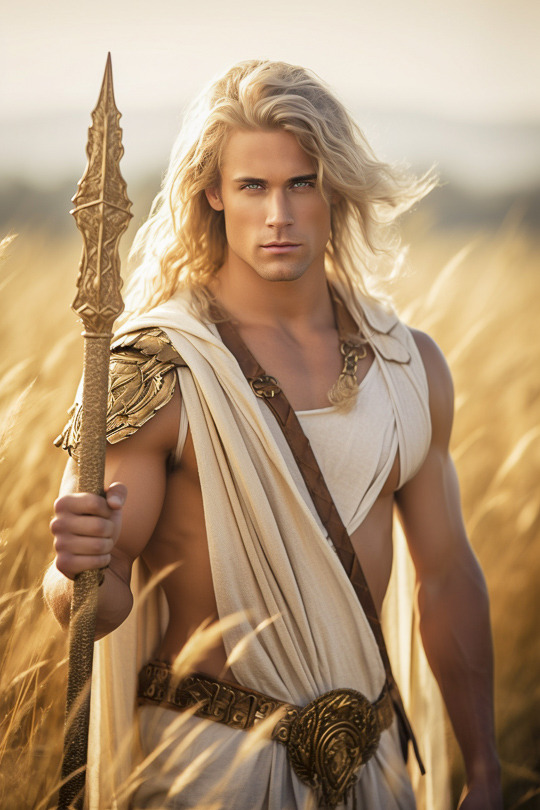
A Blessed Lughnasadh (2023)
Happy Lammas, Friends.
#lughnasadh#lammas#the pagan series#the wheel of the year#lugh#lugh deity#midjourney 5.2#lammas blessings#wheel of the year
203 notes
·
View notes
Text
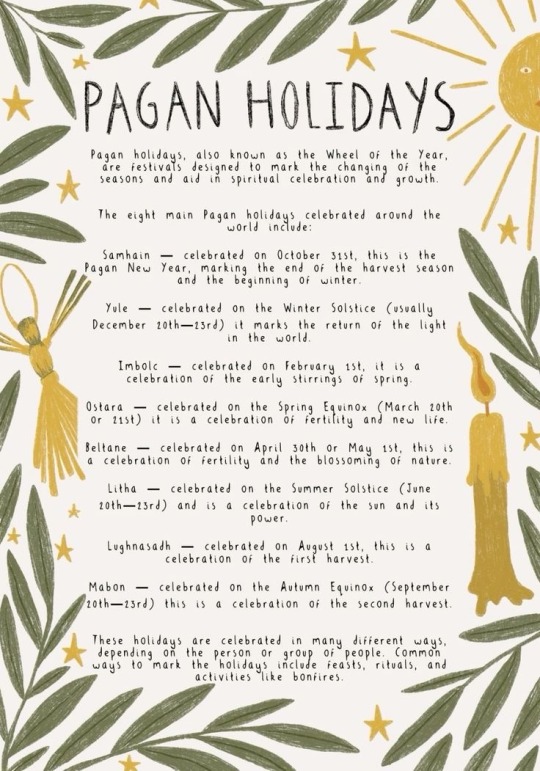
Ꭾคງคภ ђ๏ɭเ๔คฯร
🕯🌙🌞✨
#pagan#paganism#witch#witchblr#witchcraft#magic#wicca#wiccan#ostara#beltane#litha#lughnasadh#mabon#imbolic#yule#samhain#spirtuality#baby witch#beginner witch
68 notes
·
View notes
Text

PAN-FRIED LUGHNASADH CHICKEN
A delicious chicken dish to serve at the dinner table!
INGREDIENTS:
4 bone-in skin-on chicken thighs
1 tsp onion powder
2 tsp thyme
Salt and Pepper
2 tsp garlic powder
2 tsp paprika
1 tsp rosemary
4 cloves garlic
1/4 cup chicken broth/bone broth
3 slices of bacon (if you don't want to use bacon, you can always use a couple of tabs of butter in replacement)
Season your chicken with onion powder, thyme, salt, pepper, garlic powder, rosemary, and paprika, and let sit to marinate.
In a cast iron skillet fry your bacon. Drain and set bacon aside. With the bacon grease still in the pan, Sear your chicken for about 5 minutes on each side until browned. If there is too much bacon fat in the pan you can always strain a little out before adding in your chicken.
Remove the chicken from the pan. Add in chicken stock to remove all the crispy brown bits from the bottom of the pan. Add minced garlic, more salt and pepper, a sprig of fresh thyme, and a spring of fresh rosemary. Add back chicken and spoon sauce over them.
Put the pan in the oven at cook at 375F for 20-30 minutes, or until chicken is cooked.
Top chicken with bacon in the skillet and serve with a hearty serving of scalloped potatoes, and veggies.
Have a blessed Lughnasadh!
#witches#witchy#kitchen witch#witch#magick#witchcraft#witches of tumblr#kitchen witch recipes#modern witch#modern witchcraft#lughnasadh#lughnasadh recipes#lammas
269 notes
·
View notes
Text



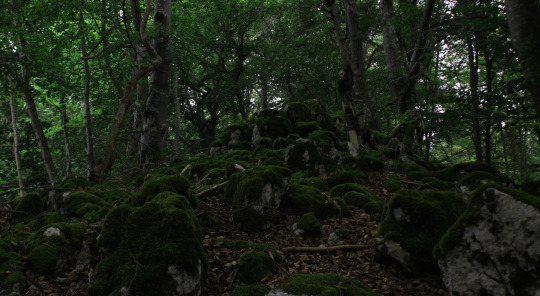
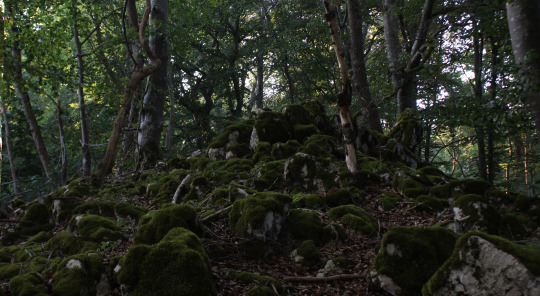



Holy days at the Sacred Mountain
Imbolg / Ostara / Beltane / Litha /
Lughnasadh / Mabon / Samhain / Yule
#mine#finally finished#this took me two and a half years#i'm not wiccan at all but I like their wheel of the year#speaks to my astronomical side#forestcore#forest#nature photography#moss#seasons#pagan#solstice#equinox#imbolg#ostara#beltane#litha#lughnasadh#mabon#samhain#yule#wheel of the year
265 notes
·
View notes
Text
The Irish for August is Lúnasa
The festival can be called Lughnasadh or Lughnasa or Lúnasa
But the month is always Lúnasa
162 notes
·
View notes
Text

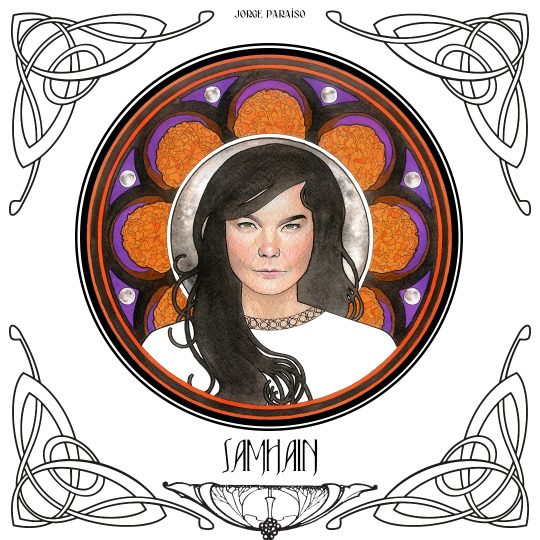
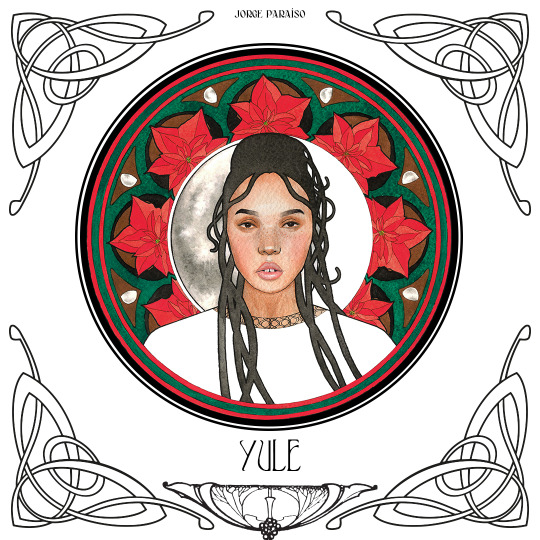
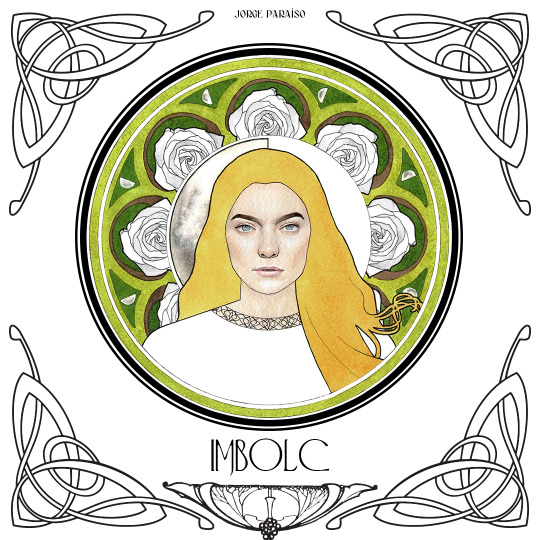

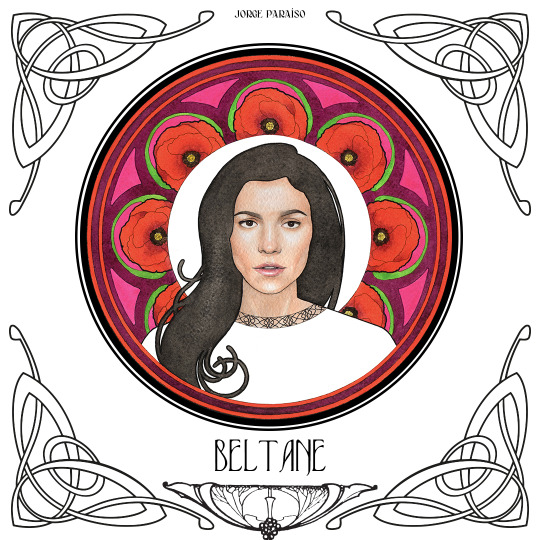

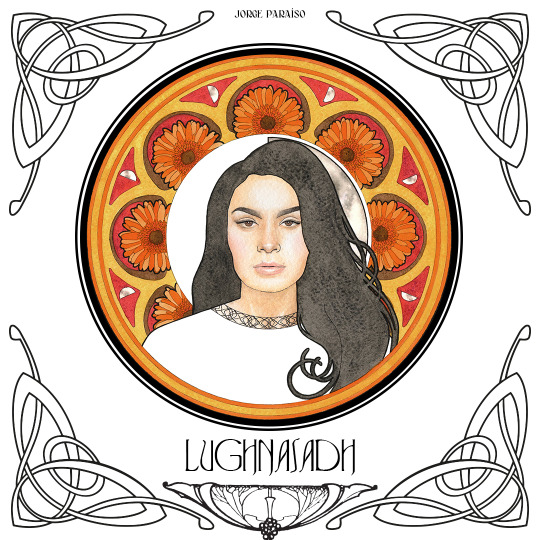

Wheel Of The Year
2023
Watercolor on paper
#Jorge Paraíso#Wheel Of The Year#Samhain#Yule#Imbolc#Ostara#Beltane#Litha#Lughnasadh#Mabon#Björk#FKATwigs#Lorde#Grimes#Marina#Marina Diamandis#Marina and the Diamonds#Lana Del Rey#Charli XCX#Florence Welch#Florence And The Machine#Watercolor#Illustration#Art
90 notes
·
View notes
Text
Important Facts about Lughnasadh from an Irish Celtic Reconstructionist
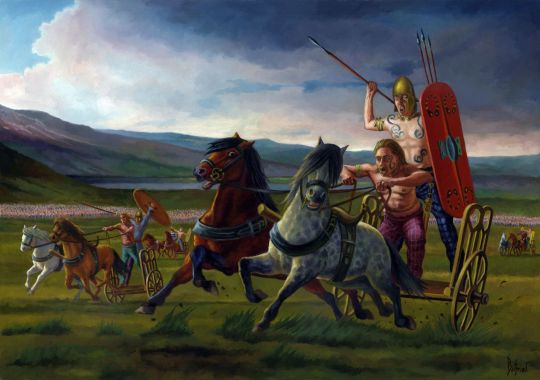

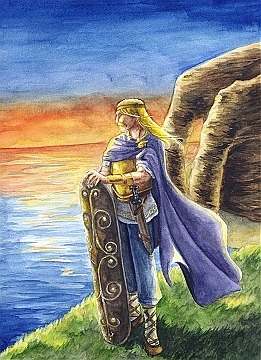
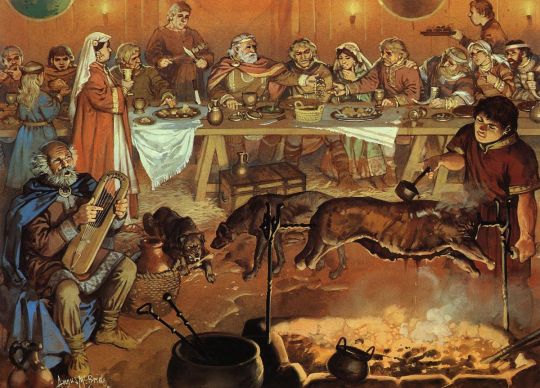
Spelling and Pronunciation
OI. Lughnasadh (Loo-na-sa), sometimes spelled Lughnasa or Modern Irish Lúnasa. Not to be confused with other harvest festivals like Lammas.
Dates
Most reconstructionists celebrate Lughnasadh on July 31st - August 1st from sundown to sundown by the Gregorian calendar, while others choose to celebrate the transitional period between the months as they would have been by the Julian calendar (about 13 days later by the Gregorian calendar).
Traditionally this festival likely would have happened as the grains were ready for harvesting or possibly even when the wild bilberries were ripe (as some scholars mention that if the grains were not ripe they would still preform a ritualized ‘first harvesting’ but it is possible this tradition came after the festival was firmly tied to a calendar date.)
Importance in the Mythos
In the mythologies it is well documented that this festival coincides with Lugh’s funeral games in honor of his foster-mother Tailtiu, known as Aonach Tailteann. In the mythologies she is said to have died of exhaustion after clearing the plains of Ireland for agricultural needs. The first documented instance of Lughnasadh in the mythologies was in the Wooing of Emer, Tochmarc Emire, which makes sense given the importance of marriages at this time of the year. It is not known specifically but widely speculated that the curse of the Ulstermen by Macha took place at a horse race for this festival.
In later time periods it is common to see a form of struggle, normally between the ‘protective’ forces and ‘destructive’ forces. The modern equivalent being the struggle between Saint Patrick and Crom Dubh but this is likely a reflection of an early struggle between Lugh and Balor (which I previously mentioned in my info-dump on Bealtaine).
Celebration Traditions
Aonachs, funeral games, have (to the best of our knowledge) been a custom in Ireland since the bronze age and were practiced on and off into the middle ages. They had both personal and community functions and occurred in three stages. Stage one was the funeral proceedings themselves. They would last one to three days, likely depending on the importance of the individual in question. Mourning songs and chants were participated in by both the attendees and the Druids. The second stage was for proclaiming of laws. Aonachs were a time when universal peace between túaths was declared. The third stage was that of Cuiteach Fuait, games that tested mental and physical abilities. These games included the well known horse and chariot races, wrestling games, boxing, high jumps but also competitions in strategy, singing, story telling and between various skilled craftsmen.
It was incredibly common for marriages to be arranged and preformed during this festival. More well known ‘trial marriages’ (lasting a year and a day) were still preformed at this festival up until the 13th century. It is likely that the coupling occurring at this time of year had an effect on the relationship to births seen at Imbolg (which falls 9 months later).
MacNeill, a leading scholarly expert on the festival, notes that a ritualistic bull sacrifice was made at this festival and the bull would then be eaten. I could not find any definitive evidence to support the idea, but I think it was likely that bulls in general would be culled from the herd at this point in the year to supply the feast.
Art credit @ire-ethereal
#irish#irish mythology#celtic#irish paganism#irish polytheism#paganism#celtic paganism#celtic polytheism#pagan#celtic reconstructionist#celtic reconstructionism#celtic mythology#irish reconstructionism#irish reconstructionist#festival#fire festival#lugh#lughnasadh#Lughnasa#NOT lammas#Tailtiu#harvest#blackcrowing
262 notes
·
View notes